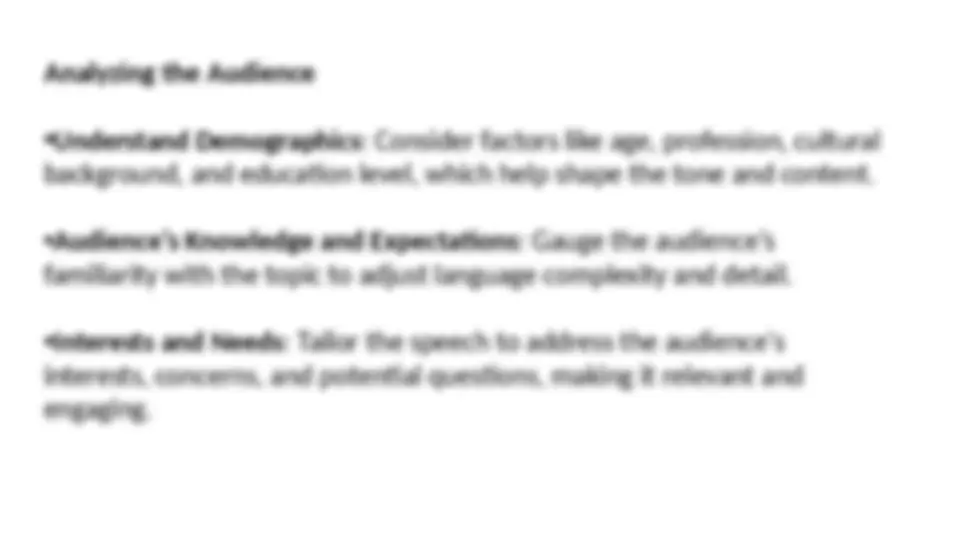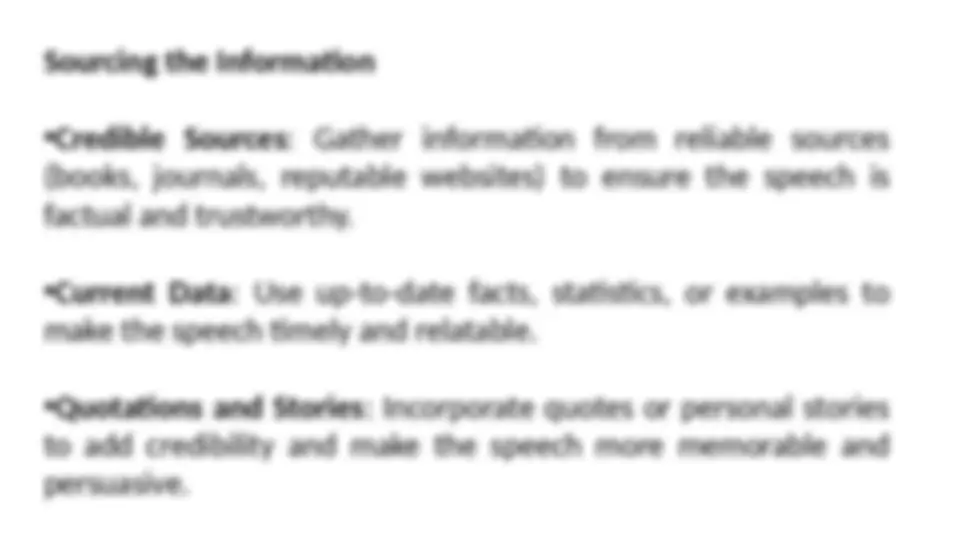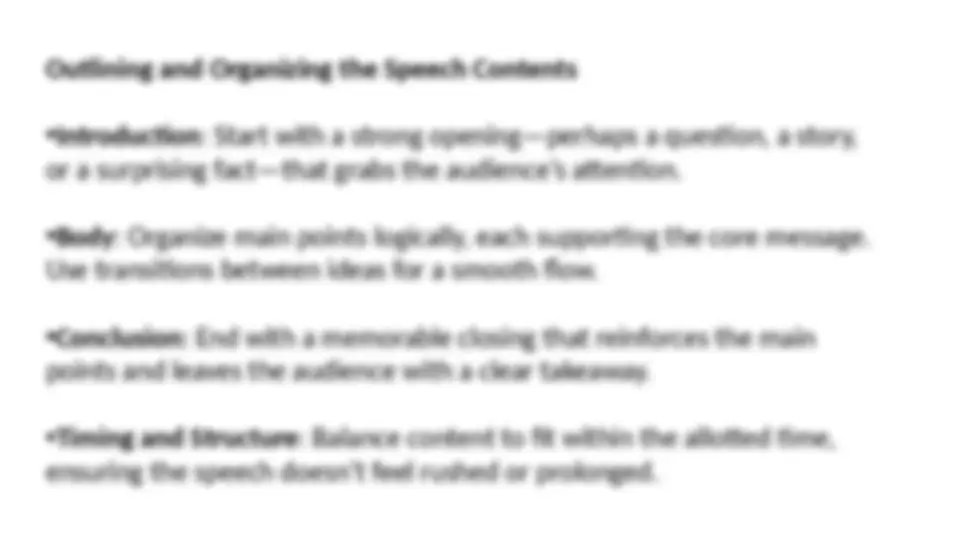





Study with the several resources on Docsity

Earn points by helping other students or get them with a premium plan


Prepare for your exams
Study with the several resources on Docsity

Earn points to download
Earn points by helping other students or get them with a premium plan
Community
Ask the community for help and clear up your study doubts
Discover the best universities in your country according to Docsity users
Free resources
Download our free guides on studying techniques, anxiety management strategies, and thesis advice from Docsity tutors
The Principles of Speech Writing is a comprehensive subject that encompasses various techniques and guidelines for crafting a speech that effectively communicates its intended message to an audience. A deep exploration of this subject would involve breaking it down into key components that help structure, style, and deliver the speech. Here’s an in-depth breakdown of the content.
Typology: Lecture notes
1 / 6

This page cannot be seen from the preview
Don't miss anything!




Choosing the Topic
Identify Relevance : Select a topic that aligns with the audience’s
interests and current issues they care about. This increases the speech's
impact.
Passion and Knowledge : The speaker should ideally be passionate and
knowledgeable about the topic, as this translates into a more authentic
and engaging delivery.
Purpose-Driven Choice : Define the purpose (to inform, persuade,
entertain, etc.) before finalizing the topic, as this shapes the speech’s
content and tone.
Outlining and Organizing the Speech Contents
Introduction : Start with a strong opening—perhaps a question, a story,
or a surprising fact—that grabs the audience’s attention.
Body : Organize main points logically, each supporting the core message.
Use transitions between ideas for a smooth flow.
Conclusion : End with a memorable closing that reinforces the main
points and leaves the audience with a clear takeaway.
Timing and Structure : Balance content to fit within the allotted time,
ensuring the speech doesn’t feel rushed or prolonged.